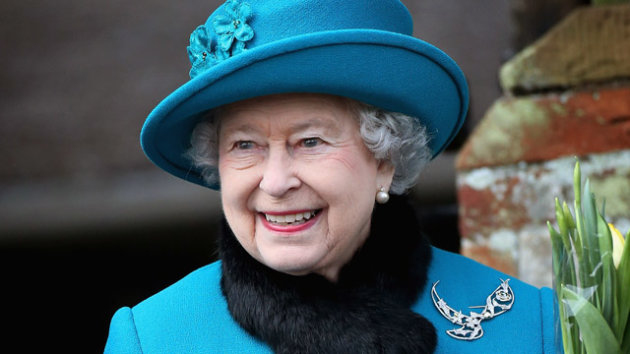She has 30 godchildren.
And more than 1.5 million people have attended her garden parties.
Surely, the queen doesn't need any gifts.
But heads of state, distinguished guests and even subjects of Queen Elizabeth II bestow Her Majesty will all sorts of presents, including a live llama, Legos, and a model of her state coach made from an ostrich egg.
Those are just some of the highlights of a newly released list of gifts the queen received in 2012, her 60th year on the throne.
Perhaps the most unique gift came from the British government, which renamed part of Antarctica in her honor for her Diamond Jubilee (even though it's not clear the area was theirs to name). Queen Elizabeth Land sprawls across 169,000 square miles, almost double the size of the United Kingdom.
Some of the strangest gifts came unsolicited from the British public: a knitted tea cosy depicting the queen with her beloved corgis, a 1/43rd scale model of the queen's Rolls Royce Phantom (full-size model worth $500,000), and that ostrich-egg state coach. (The corgis did pretty well: they also received a crown-shaped dog bed from Tuffies Dog Beds, a company in Scotland.)
There are simply no excuses for some of the gifts. The High commissioner for the Republic of Zambia gave her a "sports shirt." Glasgow City College gave her a cake. The artist Cimon Butler gifted her a Lego sculpture of Tower Bridge. And the British prime minister and the cabinet gifted "60 place mats." (Although they also made a charitable donation to the Queen Elizabeth Diamond Jubilee Trust.)
Elizabeth, 86, received a boxed set of gold, silver and bronze Olympic medals from International Olympic Committee president Jacques Rogges. And the Obamas gave her a 1950s Tiffany & Co silver compact.
"What makes a good gift is something practical," said Dickie Arbiter, the queen's former press secretary. "She's not a frivolous person. She's very much the sort of person who is practical and down to earth. She doesn't like to receive gifts for the sake of receiving gifts. She wants something useful."
Not everyone followed that advice. She received honorary ownership of a baby llama and the adoption of a baby Asian elephant. (It's not the first time she has received animals: among others, the president of Cameroon gave her a 7-year-old bull elephant called "Jumbo" in 1972.)
Some gifts she will likely never use.
The owner of a theater in western England gave her a silver token with the inscription, "The Proprietor of this Ticket is Entitled to the Sight of Every Performance to be exhibited in this House."
She also received jewelry, even though she has her own, rather extensive set in the Tower of London. The president of Yemen gifted her 60 pieces of onyx and ancient Yemeni silver jewelry, the emir of Kuwait gave her a necklace, earrings, ring and a bangle, and the British Jewellers' Association created a Diamond Jubilee brooch made of platinum with Welsh and Scottish gold and diamonds.
Not that every gift was expensive: from the Royal Engineers Association, she received two garden benches.
In total, according to the list provided to ABC News by Buckingham Palace, the public gifted her 436 books, 235 CDs and DVDs, 81 pieces of embroidery or knitting, 78 self-portraits, 40 digital photograph books, 28 wall hangings, 19 tea towels and nine jigsaws.
Every single gift gets a thank you note. But she's not allowed to regift anything. Royals are now strictly barred from selling or exchanging presents.
Asked what someone who is searching for a gift for the queen should consider, Arbiter said, "Just don't. ... She gets so much, it all gets stored away, some of it doesn't even get stored, if you get my drift."













































